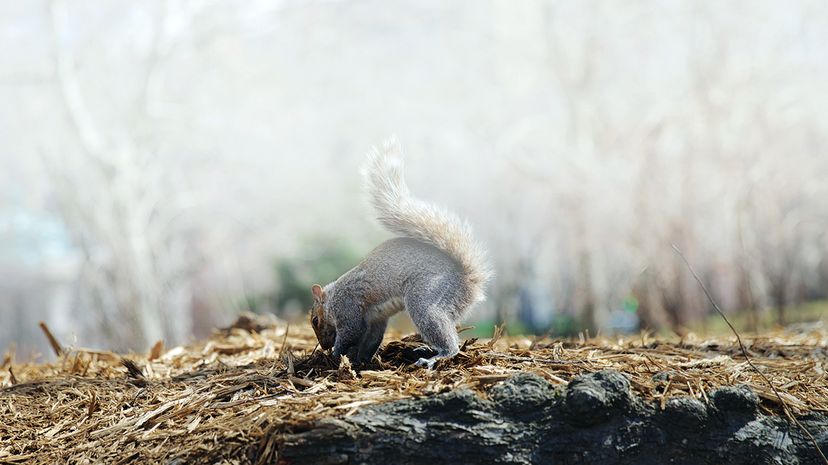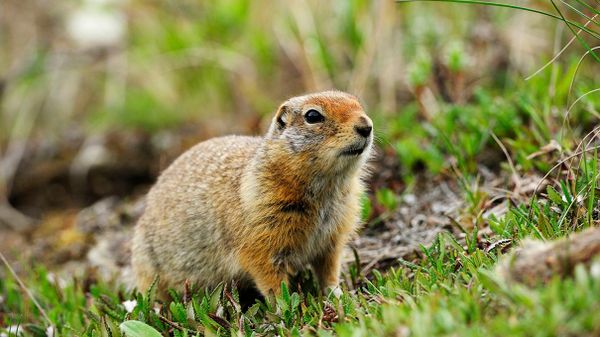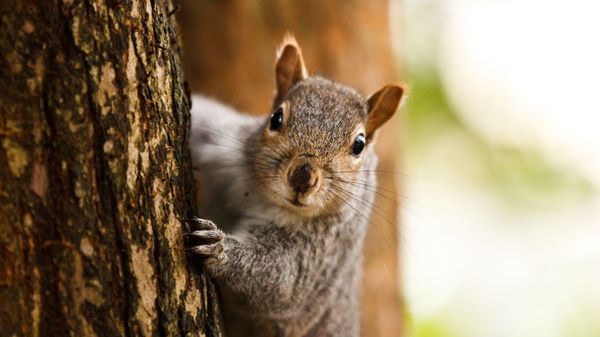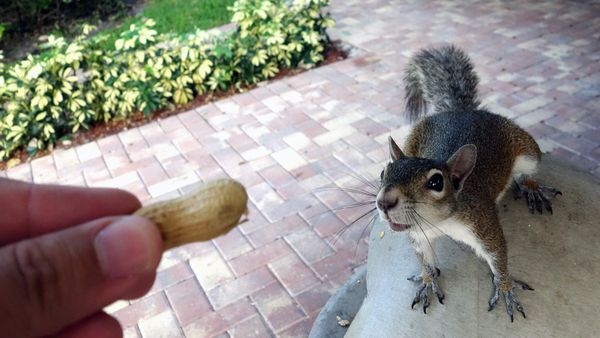
Despite how common North American tree squirrels are in many cities, neighborhoods and outdoor spaces, a number of misconceptions exist about these little critters.
One is that the Eastern gray squirrel, Eastern fox squirrel, and Northern or Southern flying squirrels hibernate during the winter. They do not. (However, most ground squirrels — like the California ground squirrel — do take a long snooze during the colder months.)
Advertisement
Another misconception: Tree squirrels store their food — tree fruit, like acorns — in their nests or dens to snack on all winter. They don't do that either.
In fact, the process by which tree squirrels keep themselves fed during the winter is a bit more complex and active than stocking the ol' "pantry" at home, and researchers are learning that it suggests some advanced memory skills.
A study — from professors in the Department of Psychology at University of California at Berkeley, and published in the September 2017 issue of the journal Royal Society of Open Science — claims that tree squirrels use a mnemonic technique called "spatial chunking" to sort out and bury their nut scores by size, type, and perhaps nutritional value and taste. When they are hungry later, it is theorized, they can remember where to find what they want.
But let's back up a little. First, it's important to know that both the Eastern gray and Eastern fox squirrels dine on a varying menu of seeds, nuts, acorns, tree buds, berries, leaves, parts of pinecones, and other food some of us don't like to think about (bird eggs and nestlings), as well as the occasional slice of found pizza. Some of that stuff they eat right away; the rest they take to the nest or den for later.
But when winter approaches, squirrels are faced with a challenge: They know instinctively that food sources will soon be scarce, so they gather all the food they'll need, while also keeping themselves fed day to day. That's why they're so busy in the fall, when Mother Nature has made sure that all the acorns have fallen from the trees.
Second, Eastern gray and Eastern fox squirrels are "scatter hoarders," which means pretty much what it sounds like — they hoard their food, and scatter it in locations where they can easily access it. That's usually close to the tree holding their nest or den, but they often expand into areas of 7 acres (2.8 hectares). And rather than leaving their goods aboveground where other squirrels can steal them, they bury them — this is called "caching" — about an inch (2.5 centimeters) under the soil. Squirrels are known to crack open a nut before burying it, to keep it from germinating.
When it comes time to eat, they forage for the nuts they buried. While squirrels possess a strong sense of smell, which allows them to sniff out nuts from under a blanket of dirt, researchers have long noticed evidence of strategic intelligence in the placement of their food.
For instance, one study in 2008 reported that Eastern gray squirrels engage in "deceptive caching" — they dig a hole, pretend to throw the acorn in (while holding it in their mouth), cover up the empty hole, and run off to another secret-stash place. They do this, it was suggested, to fool other squirrels who might be watching.

Now this: The 2017 study by Mikel M. Delgado and Lucia F. Jacobs, professors at UC Berkeley indicates more complex thinking behind the caching. In field experiments conducted over 19 months from 2012 to 2014, researchers fed 45 "marked, free-ranging" Eastern fox squirrels one nut at a time — 16 total for each squirrel — varying the type of nut (almonds, hazelnuts, pecans and walnuts). If the squirrels didn't eat the nuts right away, researchers tracked through GPS where the squirrels subsequently buried the prizes.
What they found showed evidence of "spatial chunking." In other words, the squirrels put specific nuts in similar places to help them remember what nuts were where (i.e., almonds were placed in one general area, hazelnuts another, pizza another). No, wait, pizza was not involved in this study. But you get the point.
This mnemonic strategy has also been seen in rats. The findings, researchers write in the study, show that "a scatter hoarder could employ spatial chunking during cache distribution as a cognitive strategy to decrease memory load and hence increase accuracy of retrieval."
Squirrels have a lot to think about, in other words, and they need all the memory tricks they can get.
At least one other researcher — the guy who figured out squirrels were fake-burying nuts in the above-referenced 2008 study — agrees with the new findings.
"I ... find the results consistent with some of my studies and those of others in which we are learning how involved the scatter-hoarding process is for tree squirrels," Michael A. Steele, a biology professor at Wilkes University in Pennsylvania, says in an email. "Squirrels are certainly well adapted to solve foraging and caching problems well beyond most people's greatest expectations."
The findings, Steele says, can be translated to Eastern gray squirrels, who share similar feeding habits to fox squirrels.
"We know ... that gray squirrels selectively move more valuable seeds/nuts to sites in the open where predation risks are higher but pilferage risks [from other squirrels] are lower," Steele says. "This means squirrels assess seed/nut quality and trade off some risk of predation to secure seeds in sites."
The Berkeley study took into account, among other variables, the sex of the squirrels in the experiment, the order in which the nuts were received by the squirrels, and the weight and nutritional value of each nut.
The next time you see a squirrel digging up a nut, know that she might've just found the exact one she was looking for.
Advertisement


